
Intercepteur Cobalt
Feedback
Francisco J. Campos remembers:
❝
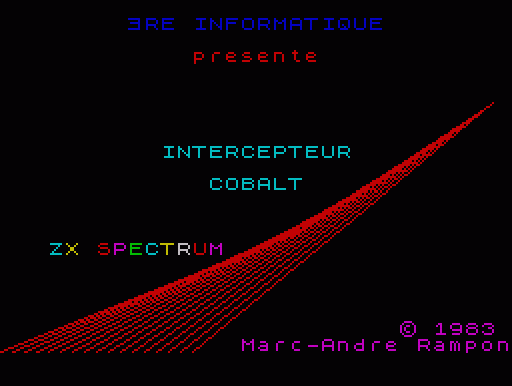
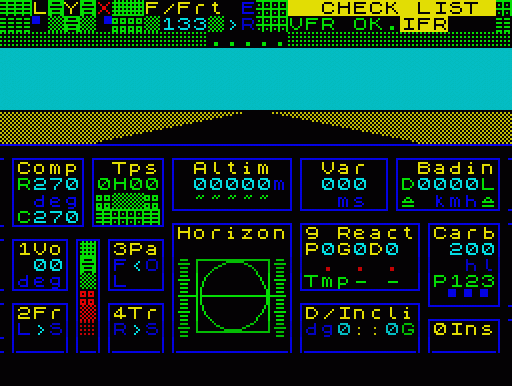
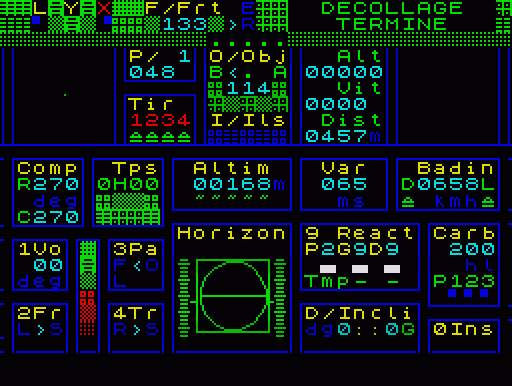
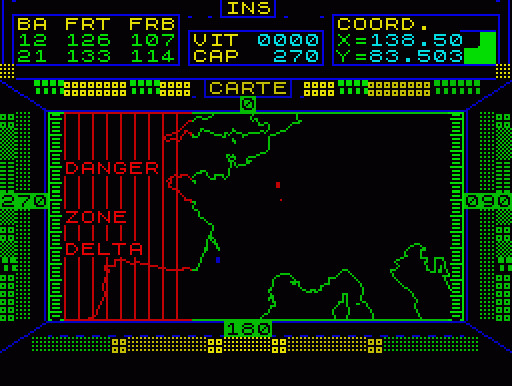
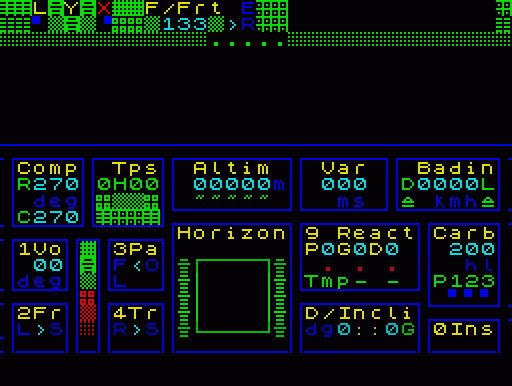
The program was entirely written in Spectrum's BASIC, but it looks wonderful despite Sinclair's poor graphic abilities.

The author was Marc-Andre Rampon for Ere Informatique, a French developer who had a lot of success some time later on the PC platform, with games like "Teenage Queen" (a strip-poker game!).
The program was entirely written in Spectrum's BASIC, but it looks wonderful despite Sinclair's poor graphic abilities.
It was considered a "serious" game, compared with the ZX hits of that time: JetPac, Jet Set Willy, Cookie, and 8-bit versions of classic arcades. The program is divided in four modules: the demo, the take-off tutorial, the pilot's test and the Intercepteur Cobalt main program, located on side B of the tape. The first three modules were 16K ones, and the Intercepteur itself, a 48K one. I had a 16Kb RAM Speccy by then (it was cheaper than their 48Kb brother), so I played the main program only when a buddy lent me his 48K Speccy...

Demo was impressive. I wasn't very familiar with the French language, but I managed to get used to it. It was not clear if the Cobalt was a top-notch airfighter or an advanced starship (game cover featured a futuristic ship over a city). Missions took place over Europe: you had to patrol the skies searching for enemies, avoiding something called the "Delta Zone": if you entered it, you'd be destroyed.

The take-off module instructed the player about the basic procedures of the ship, and they're quite a few: engage engines, watch fuel reserve, retract landing gear...
Once you were in the air, you were forced to instrument flight, since the program hadn't the capability to show open sky. Taking off without exceeding maximum speed needed a lot of tries. Once you had mastered that, you could advance to the next step, the pilot test.

It was a 10-question exam about the things you had learned on previous module. Player needed 8 correct answers out of 10 to pass the exam and go for the next module: if not, the main program could not be loaded into the computer. Nice trick...
Not suprisingly, the gameplay was really slow, but there were plenty of nifty indicators and buttons to look at, requiring all your attention.
The game itself was just a nifty version of those programmable calculator's programs, but it featured some of the things we're used to in modern flight sims, like auxiliary screens, alphanumeric indicators, lots of tech stuff, maps, compass and the like.

I spent hours trying to chase a evading enemy over France that I never caught. Unfortunately, I had to return the 48K machine to my friend, who had received a loadful of new games, including Flightsim by Psion for the Sinclair Spectrum. My career as a virtual pilot had just started...
❞